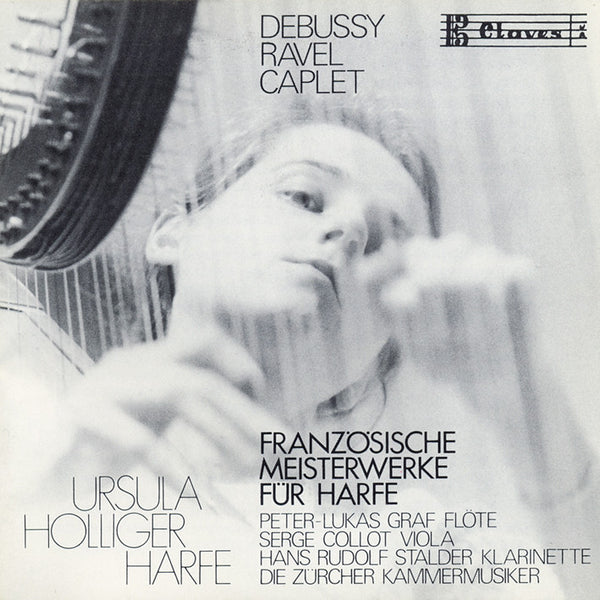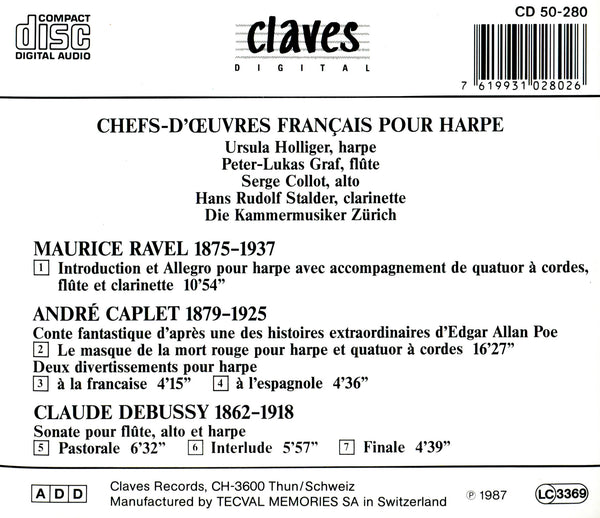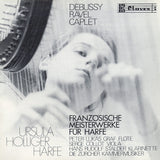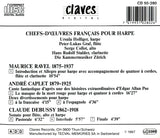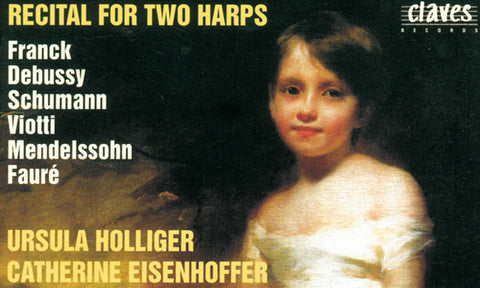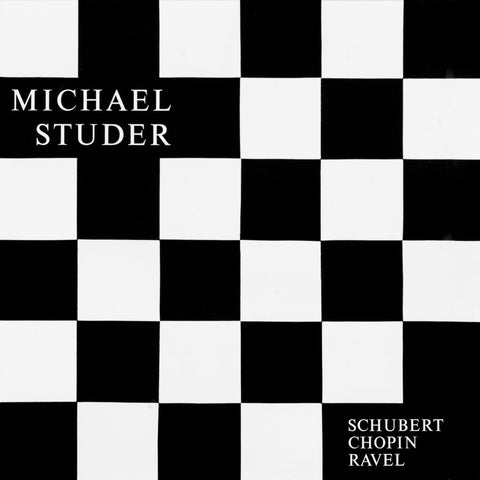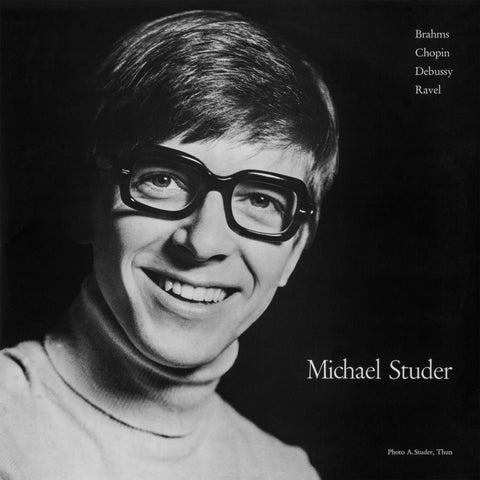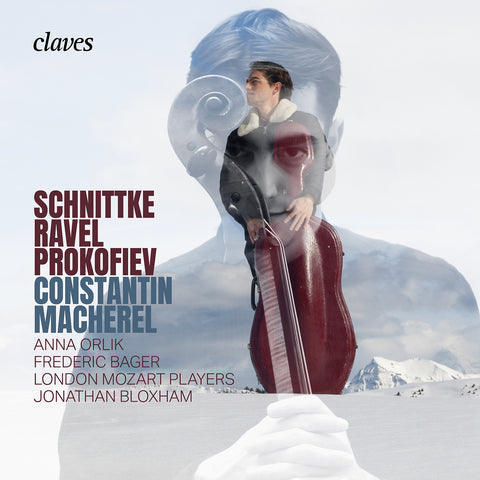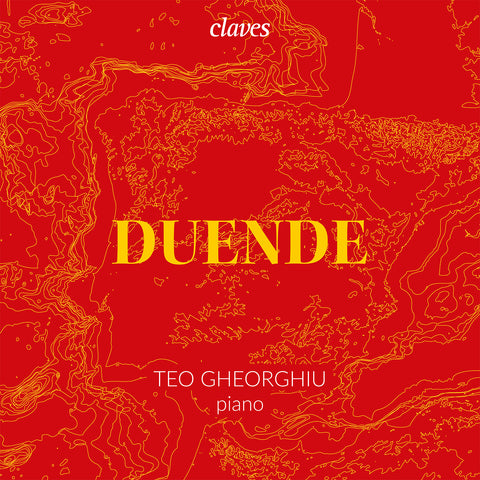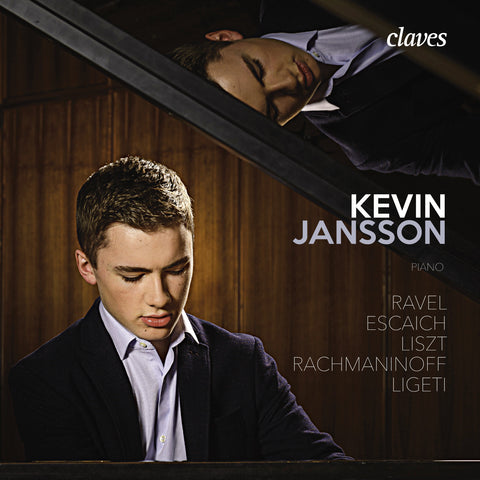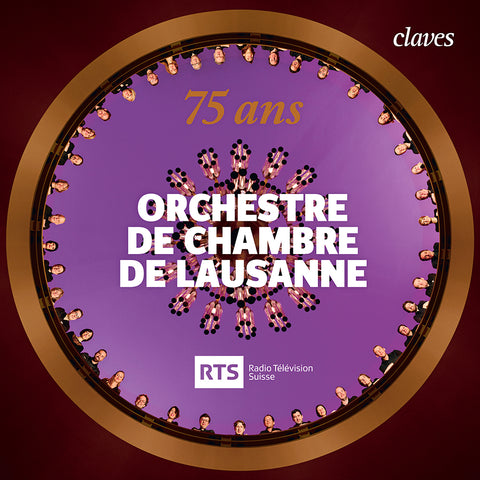(1987) Ravel, Caplet & Debussy: Chamber Music for Harp
Category(ies): Chamber
Instrument(s): Clarinet Flute Harp Viola
Main Composer: Claude Debussy
CD set: 1
Catalog N°:
CD 0280
Release: 1987
EAN/UPC: 7619931028026
- UPC: 829410602761
This album is now on repressing. Pre-order it at a special price now.
CHF 18.50
This album is no longer available on CD.
This album has not been released yet. Pre-order it from now.
CHF 18.50
This album is no longer available on CD.
CHF 18.50
VAT included for Switzerland & UE
Free shipping
This album is no longer available on CD.
VAT included for Switzerland & UE
Free shipping
This album is now on repressing. Pre-order it at a special price now.
CHF 18.50
This album is no longer available on CD.
This album has not been released yet.
Pre-order it at a special price now.
CHF 18.50
This album is no longer available on CD.
CHF 18.50
This album is no longer available on CD.
NEW: Purchases are now made in the currency of your country. Change country here or at checkout
RAVEL, CAPLET & DEBUSSY: CHAMBER MUSIC FOR HARP
The harp has a new bloom in the French Impressionism after a long wall-flowerperiod in pleasing salon music. Its sound is given now an essential part in the impressionistic palette of sound colours. Nevertheless there have been composed only a surprisingly few number of solo pieces for harp, compared to the almost inexhaustible abundance of works for piano. A reason for it may be that the diatonic harp with two pedals which since 1815 had not been modified essentially could not fully meet the demands for unlimited harmonic possibilities and – true above all for Debussy – for a tonality already disintegrated to a large extent. That is why so much hope has been placed in the chromatic harp developed in the beginning of the 20th century. Precisely the famous pieces of Ravel (‘Introduction et Allegro’) and of Debussy (‘Danses sacrée et profane’) as well as the first version of André Caplets ‘Le Masque de la mort rouge’ have been composed at the suggestion of Pleyel, as the company had invited the most important French composers to write for chromatic harp. However, as is known, this instrument did not find acceptance. The pieces referred to either have been rewritten for the usual pedal harp after their performance or they were clearly enough intended for diatonic harp right from the beginning.
In September and October 1915, the last breathing spells before the fatal illness took finally hold of him, Debussy composed the marvelously easy and ethereal ‘Deuxième Sonate pour flute, alto et harpe’. The projected ‘Six Sonates pour divers instruments, composes par Claude Debussy, musician françois’ three of which have been achieved (for another one Debussy had only decided for the instruments: oboe, horn and cembalo) were, as well as the several planned ‘concerts’ for piano and different instrumental groups, intended as an homage to the genius of Rameau and Couperin. But Debussy did not see this homage as a dependence on the 17th century.
Phrases imitating classical style are merely layed on the work like a very thin patina wherein by a pointed pencil extremely subtle delineations of greatest lucidity are incised. Like Webern, but by different stylistic means, Debussy develops his ideas from a few musical units; sounds and lines enchanted loose their materialized character. Time is running off in a flexibility not known before in Occidental music. The music virtually begins to breathe like a living organism. This flexible time continuum, pointing out to the distant future up to the works of Boulez, seems to originate from the Eastern music Debussy met with, and its influence on the essential nature of this music seems to be much more important than the often mentioned, but rather outward adaptation of far Eastern Sound impressions (of the Javanese and Balinese Gamelan).
(1987) Ravel, Caplet & Debussy: Chamber Music for Harp - CD 0280
The harp has a new bloom in the French Impressionism after a long wall-flowerperiod in pleasing salon music. Its sound is given now an essential part in the impressionistic palette of sound colours. Nevertheless there have been composed only a surprisingly few number of solo pieces for harp, compared to the almost inexhaustible abundance of works for piano. A reason for it may be that the diatonic harp with two pedals which since 1815 had not been modified essentially could not fully meet the demands for unlimited harmonic possibilities and – true above all for Debussy – for a tonality already disintegrated to a large extent. That is why so much hope has been placed in the chromatic harp developed in the beginning of the 20th century. Precisely the famous pieces of Ravel (‘Introduction et Allegro’) and of Debussy (‘Danses sacrée et profane’) as well as the first version of André Caplets ‘Le Masque de la mort rouge’ have been composed at the suggestion of Pleyel, as the company had invited the most important French composers to write for chromatic harp. However, as is known, this instrument did not find acceptance. The pieces referred to either have been rewritten for the usual pedal harp after their performance or they were clearly enough intended for diatonic harp right from the beginning.
In September and October 1915, the last breathing spells before the fatal illness took finally hold of him, Debussy composed the marvelously easy and ethereal ‘Deuxième Sonate pour flute, alto et harpe’. The projected ‘Six Sonates pour divers instruments, composes par Claude Debussy, musician françois’ three of which have been achieved (for another one Debussy had only decided for the instruments: oboe, horn and cembalo) were, as well as the several planned ‘concerts’ for piano and different instrumental groups, intended as an homage to the genius of Rameau and Couperin. But Debussy did not see this homage as a dependence on the 17th century.
Phrases imitating classical style are merely layed on the work like a very thin patina wherein by a pointed pencil extremely subtle delineations of greatest lucidity are incised. Like Webern, but by different stylistic means, Debussy develops his ideas from a few musical units; sounds and lines enchanted loose their materialized character. Time is running off in a flexibility not known before in Occidental music. The music virtually begins to breathe like a living organism. This flexible time continuum, pointing out to the distant future up to the works of Boulez, seems to originate from the Eastern music Debussy met with, and its influence on the essential nature of this music seems to be much more important than the often mentioned, but rather outward adaptation of far Eastern Sound impressions (of the Javanese and Balinese Gamelan).
Return to the album | Composer(s): Claude Debussy | Main Artist: Ursula Holliger







